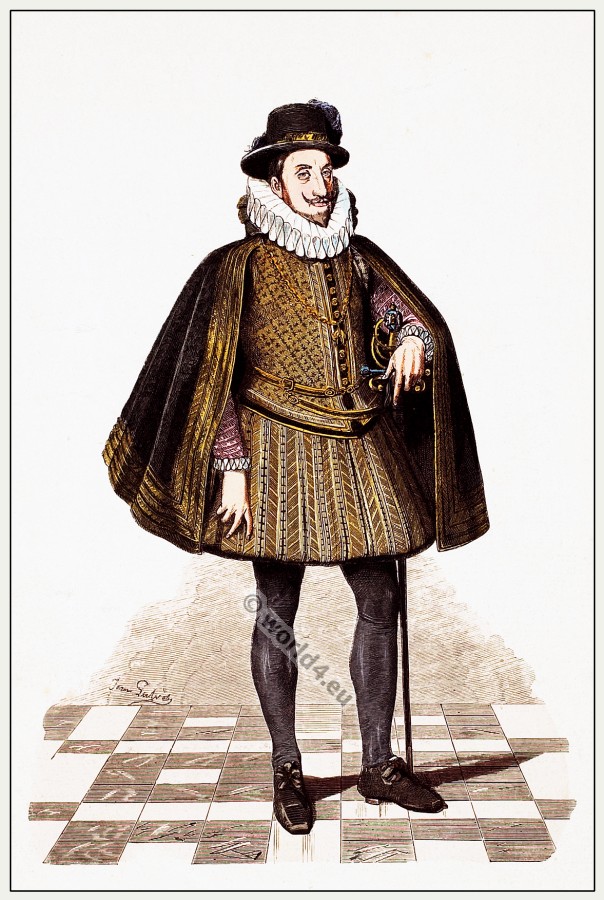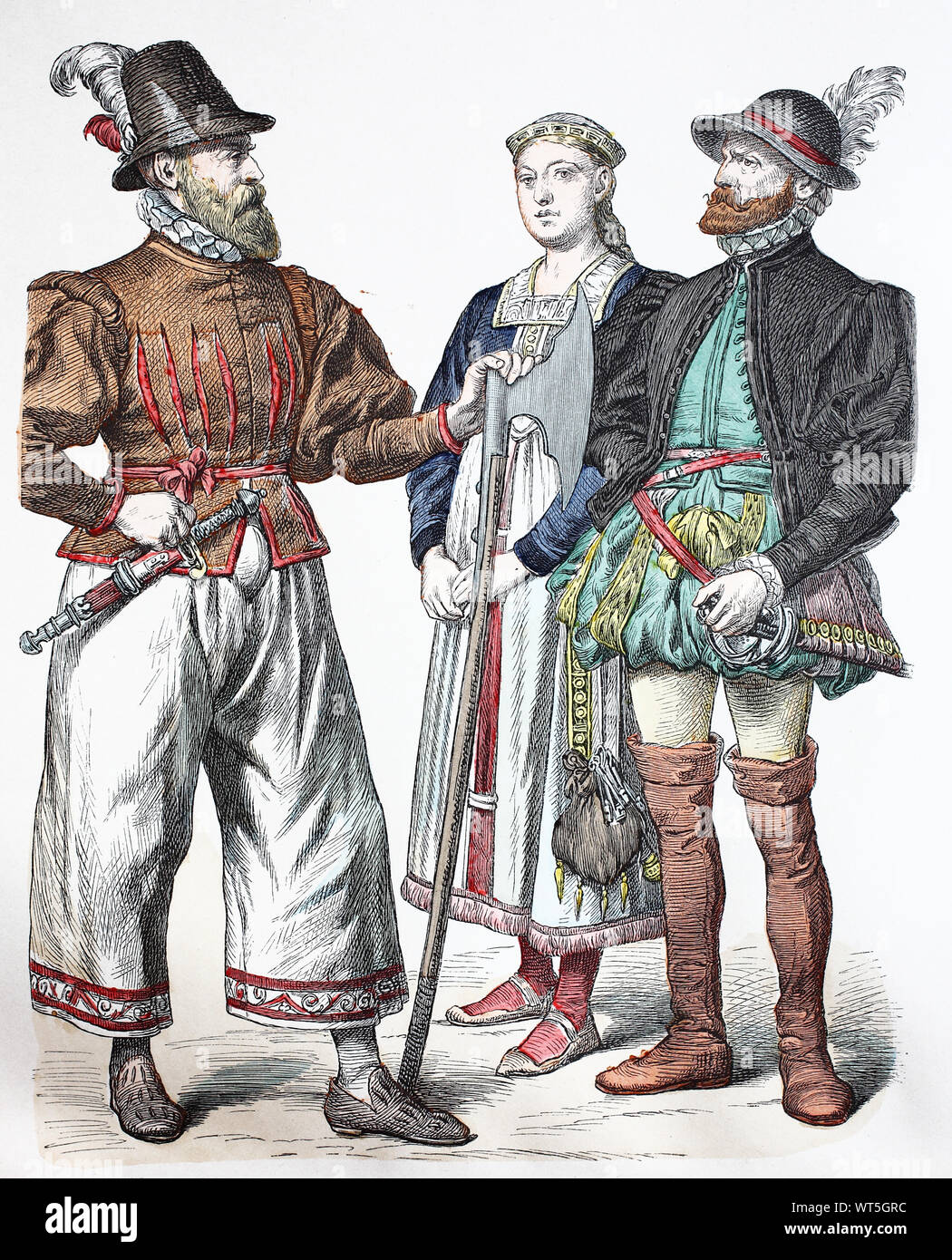
IMG_0839.jpg German outfit, 16th century fashion, Renaissance clothing
In this material, we'll unveil some curious facts about European 16th-century male clothes, show you a nice modern reproduction of that period's attire, and introduce you to the secrets of German Renaissance men's clothing, with all its peculiarities. Read also: Aristocratic menswear in the 16th century.

Pin on fashion.history
Oil on canvas; (48 x 37 3/4 in). Indianapolis Museum of Art, 2016.162. The Clowes Collection. Source: IMA Fig. 5 - Maker unknown (English). The Gatacre Jewel; The Fair Maid of Gatacre, ca. 1560. Amethyst, mounted in enamelled gold, and hung with pearls; 6.9 x 3.9 cm. London: Victoria and Albert Museum, M.7-1982.

Мода эпохи возрождения, Средневековая одежда, Историческое платье
Men's dress at the beginning of the fifteenth century was in all essentials similar to that which they had worn at the end of the previous century, but the character of the separate items had undergone considerable change owing to incongruous combinations and degenerations in shape.

German headdress, late 15th century to early 16th century Medieval Garb
The half-length portrait of Katharina Merian, attributed to the German artist Hans Brosamer, is an exemplary painting of German women's fashion of the early 16th century.. The late 16th century's fashion is characterized by its Spanish influence, and as a Spanish Prince, Don Carlos exhibits the height of the time's fashion. 1560-1569.

16th Century Cranach Princess Dress 16th Century German Costuming
1550-1600 in European fashion English opulence, Italian reticella lace ruff, (possibly) Polish ornamentation, a French farthingale, and Spanish severity: The "Ermine Portrait" of Elizabeth I Fashion in the period 1550-1600 in European clothing was characterized by increased opulence.

Spanish court dress. German Emperor Ferdinand II.
OVERVIEW The first decade of the 17th century saw a continuation of many Elizabethan trends, with small changes in skirt length, sleeve shape, and collar types slowly being introduced. Womenswear

16th Century Clothing Stock Photos & 16th Century Clothing Stock Images
European renaissance. Costume examples focusing on France, England, Germany and Italy in the 16th century. Clothing of the aristocracy, the military, citizens and peasants. Great changes now developed. The costumes for men and women from this time on are no longer alike. The desire now seemed to be to alter in various ways the normal shape of.

late 16th Century XVI German armoured citizen and citizeness Stock
October 2004 At the turn of the fifteenth to the sixteenth century, one of the most startling changes in taste and fashion occurred, which was immediately mirrored in armor and can best be witnessed in the German harness of the period.

16th century costume and fashion history. European renaissance
Since the 16th century, two types of traditional country dress developed: work clothes and Sunday/festive dress. The best examples of these styles are native dress (Tracht) and folk-style dress (Dirndl). A dirndl is a type of traditional dress worn in Germany - especially Bavaria - Switzerland, Liechtenstein, Austria and South Tyrol, based.

German 16th Century Men’s Rocks/Schaub (Dress Coat/Cloak) Notes on
Elizabeth of York, late 16th century, based on a work of circa 1500. Oil on panel; 56.5 x 41.6 cm (22 1/4 x 16 3/8 in). London: National Portrait Gallery, NPG 311. Source: National Portrait Gallery In England

16th Century European Clothing
Top 10 Best Vintage Clothing in Saint Louis, MO - January 2024 - Yelp - The Vintage Haberdashery, Reset Vintage Apparel, Retro 101, Found Vintage - S Grand, The Green Shag Market, The Vault Luxury Resale, May's Place, Avalon Exchange, Get the WORD Out, Max and Moo's Thrift.

Planning the Next Hunt by ColonelLiamRoss on deviantART 16th century
German shirts and chemises were decorated with wide bands of gold trim at the neckline, which was uniformly low early in the period and grew higher by midcentury.

Enorme Matchmaker Härte friesen kostüm Extra Verbreitung Herzog
Elsa. Renaissance portrait by Ferdinand Wagner. Renaissance Chasuble decorated with embroidery, 16th century. 16th Century Ninon de Lenclos. The Celebrated Beauty of the 17th Century. Note: Anton Fugger. Prince of merchants, 16th century. Filed under 1520, 16th Century, Court dress, Germany, Hairstyle, Hat, Headdresses, Nobility

Friesland Costumes 16th Century. Traditional Medieval clothing. German
German townswomen of the Reformation period. Late Renaissance costumes. German patrician women. First third of the 16th century. Source: Münchener Bilderbogen 1848 bis 1898. On the history of costumes. Published by Braun & Schneider. Royal Court and University Printing Office of Dr. C. Wolf & Sohn in Munich. On the history of costumes.

15th c. German School Portrait Man Red Chalk Costume Renaissance
Queen Elizabeth of England, showing the queen adorned in Renaissance fashion with pearl choker and pendant and a series of longer necklaces, portrait in oil by an unknown English artist, 16th century; in the Pitti Palace, Florence. (more)

€ 33.00 16th cent. Early 16th to early 17th century Pontormo
'Ready To Wear' Explores St. Louis Fashion — From Early Fur Trade, To Shoe Empires, To Invention Of Juniors By Evie Hemphill. Published May 25, 2021 at 5:16 PM CDT Listen • 21:27. While the fur trade in St. Louis had declined by the latter half of the 20th century, Kienzle noted that "there is a secret place" where locals and.